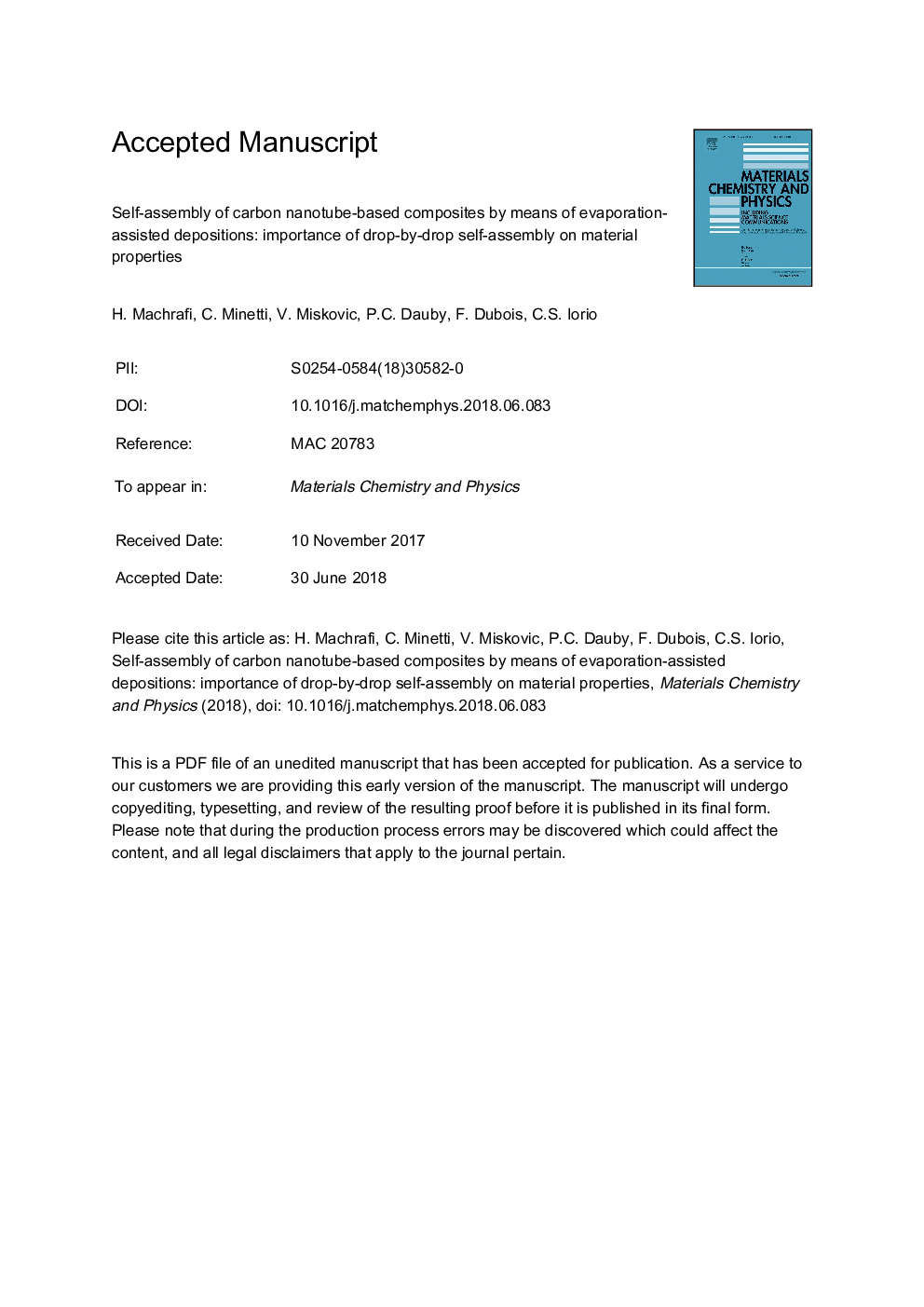| Article ID | Journal | Published Year | Pages | File Type |
|---|---|---|---|---|
| 7921157 | Materials Chemistry and Physics | 2018 | 25 Pages |
Abstract
Carbon nanotubes and silica nanoparticles are allowed to self-assemble into a nanocomposite by first forming an aqueous suspension, then depositing one drop after the other and finally letting them evaporate. Two types of composites are prepared. One by forming alternate layers and the other by forming several layers of a pre-mixed suspension. The thickness, thermal and electrical conductivity of the composites are measured versus the number of depositions. The pre-mixed composites showed an increase in the values in both the parallel and perpendicular directions of both the electrical and thermal conductivities, making them suitable for electrodes or battery-like applications. The values of the electrical and thermal conductivities in the perpendicular direction for the first composite decrease and increase, respectively, while for the parallel direction the values are significantly constant. As such, they would be useful as electrical insulators for optimal cooling. Thickness measurements showed that the pre-mixed composite is the denser one, due to a better alignment of the carbon nanotubes.
Keywords
Related Topics
Physical Sciences and Engineering
Materials Science
Electronic, Optical and Magnetic Materials
Authors
H. Machrafi, C. Minetti, V. Miskovic, P.C. Dauby, F. Dubois, C.S. Iorio,
